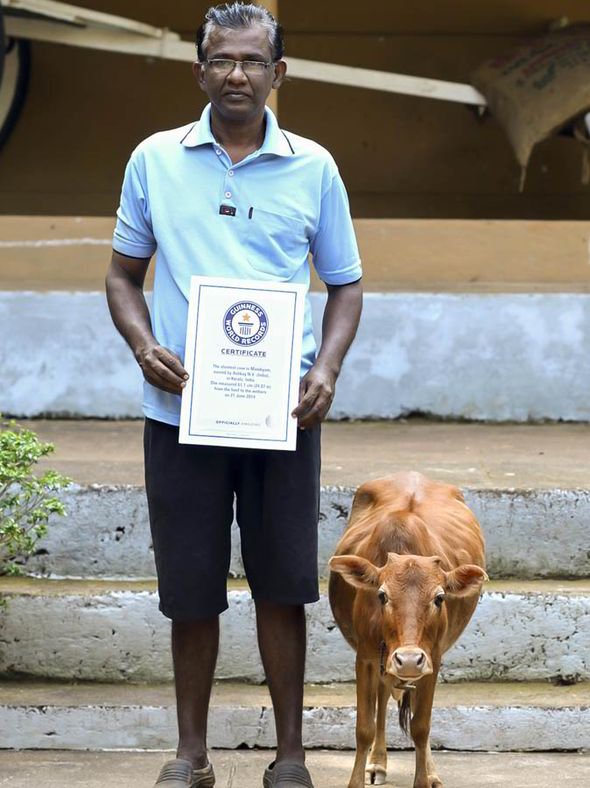Vechur

Vechur is a small-sized, rare breed, originating in the Vechur village in Kottayam district of Kerala and is generally found in the Kottayam-Ernakulam–Alapuzha belt. It is also prevalent in the Kasargod district of Kerala.
The Vechur breed is docile, short, disease-resistant and easy to maintain with low food requirement as compared to other crossbred species. These cattle are intelligent, hearty, clean and adapted to high heat conditions. It has an exceptionally small, manageable size (about the size of a large goat breed), a pleasant disposition and a long, productive life span. The Vechur cattle are resistant to Mastitis (blockage of teats in the udder), foot and mouth diseases, and respiratory infections and require almost no veterinary care.
This breed calves easily. The age at first calving is 36 to 42 months and the calving interval is generally 15 to 16 months. “Infant Mortality” is practically absent in this breed and new born calves are robust and strong. With an average length of 124 cm, average height of 87 cm, and average weight of 130 kilograms.
Utility of the Breed and Milk:-
The utility of this breed is immense. It is popular for the larger amount of milk produced in comparison to quantity of food intake and also for the high qualitative content of its milk. The adult females give 2.5 to 3.5 liters of milk per day with a high fat content of 4.5 to 5 per cent. Also, it has more of the beta Casein variety A2 and is said to have extraordinary medicinal properties. The medicinal property of its milk has been accepted by Ayurveda too. Since the Vechur cow milk has got higher proportion of smaller fat globules and saturated fatty acids, it would be therapeutically useful in malabsorption syndrome. It is also considered to be the ideal food for children and convalescents.
Characteristics:-
- They are extremely small in size with a compact body.
- The average height of the males is 85-95 cm while that of the females is about 80-90 cm. The average length is about 124 cm.
- The average weight is about 130 kilograms.
- They are mostly light red, black and white in color.
- The head is long with narrow face; the legs are short.
- The tail is long and tapering, almost touching the ground.
- The horns are small, thin, curving forward and downward. At times, the horns are extremely small and hardly visible.
- There is a small hump on the back, prominently so in the males.
- The sheath is generally small and tucked up with the body.
- The udder is well-developed with squarely placed small tapering teat.
- The milk vein is well-developed and body skin is smooth and glossy.
Vechur in Kerala
The Vechur cow was extremely popular in Kerala until the 1960s, but became rare when the native cattle were crossbred due to the state policy of aggressive cross breeding by using exotic germ-plasm on the local female cattle. As per current estimates, about 200 cows of this breed exist today. (Source: Wikipedia)
It is indeed heartening to note that the Vechur breed of cattle was saved from extinction by the conservation efforts initiated and conducted since 1989 by Ms. Sosamma Iype – the then Director of the Centre for Advanced Studies in Animal Breeding, Kerala Agricultural University (KAU), along with her team of students.
Conservation Efforts
The Vechur cow has now attracted international recognition. The Food and Agriculture Organisation (FAO) has listed the Vechur cattle among the Indian breeds in their Domestic Animal Diversity Information System under the category of Critical Breeds, meaning nearly extinct.
Our efforts to revive this breed continue. With a view to popularize the Vechur breed, the Center for Advanced Studies in Animal Genetics & Breeding (CASAGB) of the KAU has been conducting extensive research on the Vechur breed of cattle. A vigorous breeding programme is underway to produce as many pure Vechur cattle as possible.

